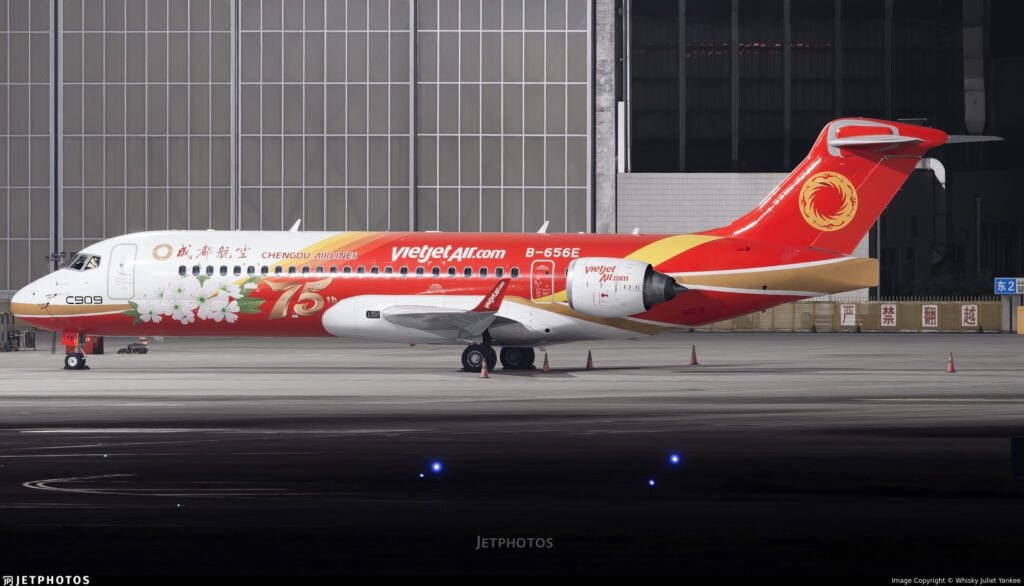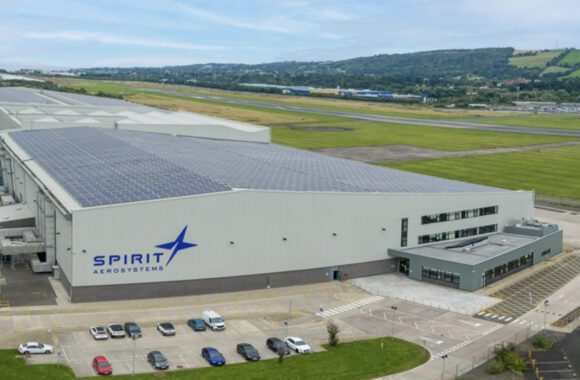
vietjet c909
Vietnam has approved the COMAC C909 for service in the country. Vietnam decided to recognize China’s CAAC certification as equivalent to that of the US. The country’s senior leadership must give final approval of this choice.
The decision is not straightforward. The Trump tariffs impact Vietnam, which has a trade surplus with the US. Vietnamese airlines have 250 Boeing aircraft on order, which goes a long way to offset this surplus. Having a trade surplus with the US is not what anyone wants right now.
Vietnam and China – A complex history
Vietnam and China have a long and complex history, but they have recently started cooperating in several areas. Despite recent collaboration, there are still other important differences.
Vietnam and China contest several islands and maritime features in the South China Sea. The most significant disputed areas include:
- The Paracel Islands (called Xisha by China and Hoang Sa by Vietnam), which China has controlled since 1974 after seizing them from South Vietnam in a brief conflict.
- The Spratly Islands (called Nansha by China and Truong Sa by Vietnam), where both countries, along with others like the Philippines, Malaysia, and Taiwan, have competing claims and maintain various outposts.
These disputes involve overlapping territorial claims, resource rights (including potential oil and gas reserves), fishing grounds, and strategic maritime passages. Both countries have engaged in island-building and militarization activities in the contested areas to reinforce their claims.
The disputes are part of broader territorial conflicts in the South China Sea. China’s expansive “nine-dash line” claim overlaps with the exclusive economic zones of several Southeast Asian nations, including Vietnam.
Assessing the C909 in Vietnam
The viability of the COMAC C909 (AKA ARJ21-700) in Vietnam is increasingly promising, driven by regulatory adjustments, airline interest, and the aircraft’s operational performance. A less-mentioned but crucial feature is price. COMAC will discount the C909 as part of its role in opening markets for China. It’s helpful to have a long-term, patient owner/investor.
Regulatory Developments
Vietnam’s Civil Aviation Authority (CAAV) is actively working to amend existing regulations to permit the operation of COMAC aircraft. Vietnamese law recognizes certifications only from the U.S. FAA and EASA. Proposed changes aim to accept China’s airworthiness certifications, facilitating the import and operation of COMAC jets like the C909. ?
Airline Interest
VietJet Air, Vietnam’s leading low-cost carrier, is interested in the C909. The airline plans to operate C909s on domestic routes, with initial flights scheduled between Hanoi and Con Dao Island starting mid-April 2025. This move indicates a strategic effort to diversify fleet options and enhance regional connectivity.
Operational Performance
The C909 has demonstrated a strong safety and reliability record. As of early 2025, over 100 C909s have been delivered, accumulating more than 200,000 flight hours. The aircraft has shown good performance in high-temperature conditions and crosswind resistance, making it suitable for various operational environments.
Strategic Implications
Introducing the C909 into Vietnam’s aviation market offers several advantages:
- Fleet Diversification: Reduces reliance on Western manufacturers like Boeing and Airbus.
- Cost Efficiency: Potentially lower acquisition and operating costs compared to Western counterparts.
- Regional Integration: Strengthens economic and aviation ties with China, aligning with broader regional strategies.
Challenges
Despite these positives, challenges remain:
- Certification Limitations: The C909 lacks FAA and EASA certifications, potentially limiting operations to the domestic market.
- Political Considerations: Balancing relationships with Western partners and China requires careful navigation.
- Operational Integration: The most significant risk for non-Chinese operators is ensuring established and reliable maintenance, training, and parts supply chains.
In conclusion, the C909 presents a viable option for Vietnam’s aviation sector, offering operational benefits and strategic diversification. Successful integration depends on regulatory approvals, effective airline adoption, and managing geopolitical dynamics.
Given the Trump tariffs, these are interesting times to experiment with the C909.
Views: 310




